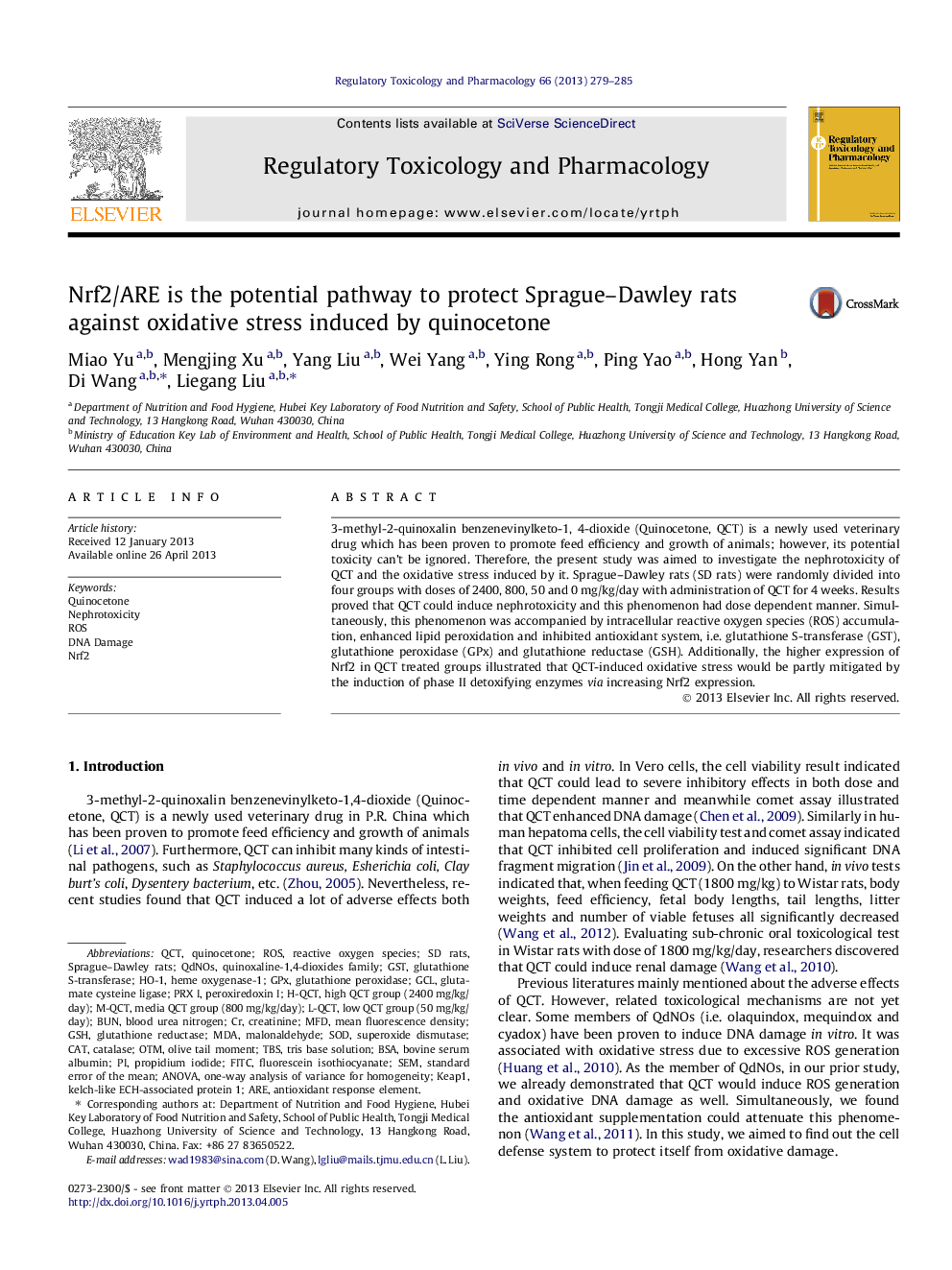| کد مقاله | کد نشریه | سال انتشار | مقاله انگلیسی | نسخه تمام متن |
|---|---|---|---|---|
| 5857655 | 1132019 | 2013 | 7 صفحه PDF | دانلود رایگان |

- QCT could induce nephrotoxicity and this phenomenon had dose dependent manner.
- Production of ROS is the key mediator of QCT-induced nephrotoxicity.
- Nrf2/ARE pathway protects cells against ROS generation induced by QCT.
3-methyl-2-quinoxalin benzenevinylketo-1, 4-dioxide (Quinocetone, QCT) is a newly used veterinary drug which has been proven to promote feed efficiency and growth of animals; however, its potential toxicity can't be ignored. Therefore, the present study was aimed to investigate the nephrotoxicity of QCT and the oxidative stress induced by it. Sprague-Dawley rats (SD rats) were randomly divided into four groups with doses of 2400, 800, 50 and 0Â mg/kg/day with administration of QCT for 4Â weeks. Results proved that QCT could induce nephrotoxicity and this phenomenon had dose dependent manner. Simultaneously, this phenomenon was accompanied by intracellular reactive oxygen species (ROS) accumulation, enhanced lipid peroxidation and inhibited antioxidant system, i.e. glutathione S-transferase (GST), glutathione peroxidase (GPx) and glutathione reductase (GSH). Additionally, the higher expression of Nrf2 in QCT treated groups illustrated that QCT-induced oxidative stress would be partly mitigated by the induction of phase II detoxifying enzymes via increasing Nrf2 expression.
Journal: Regulatory Toxicology and Pharmacology - Volume 66, Issue 3, August 2013, Pages 279-285